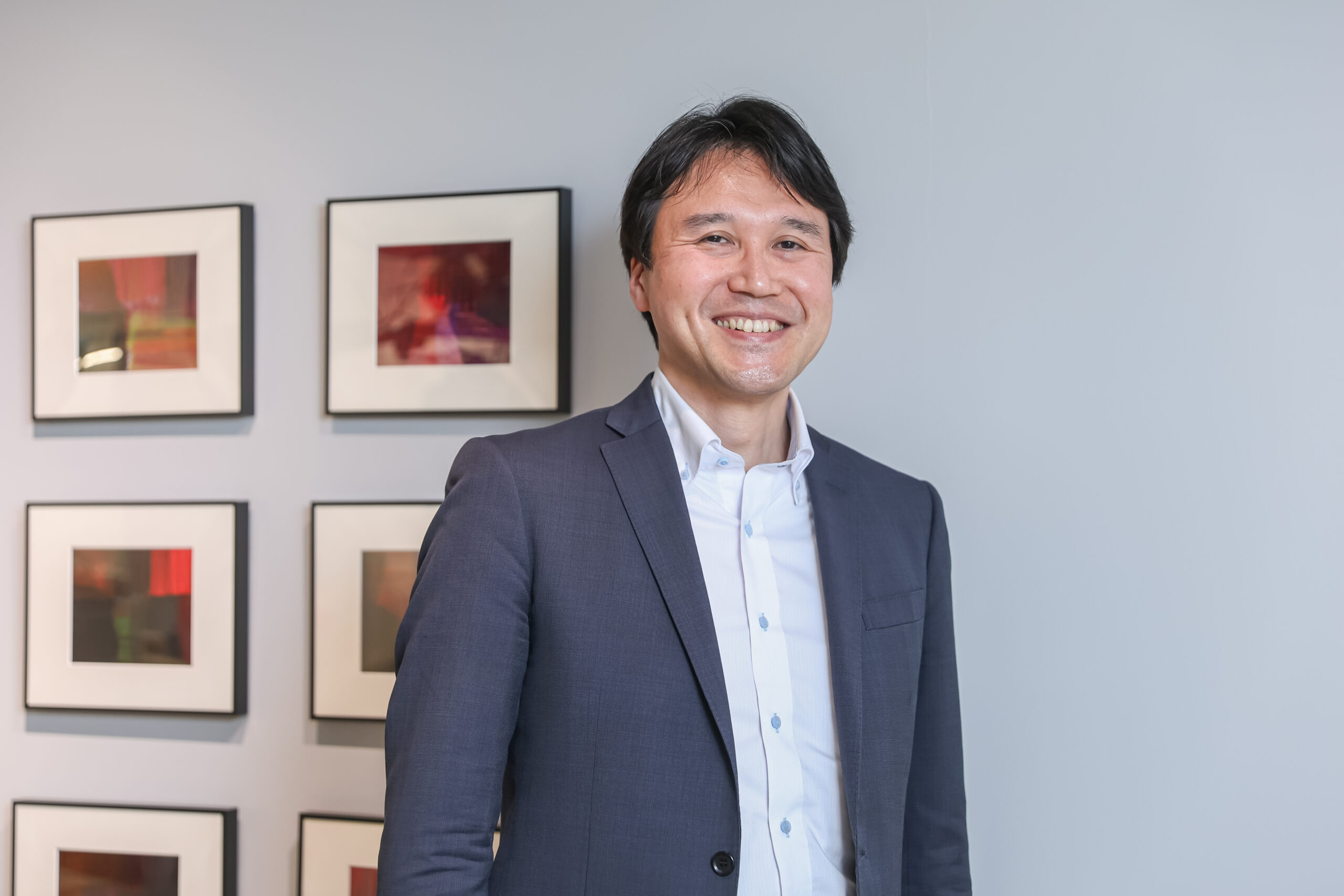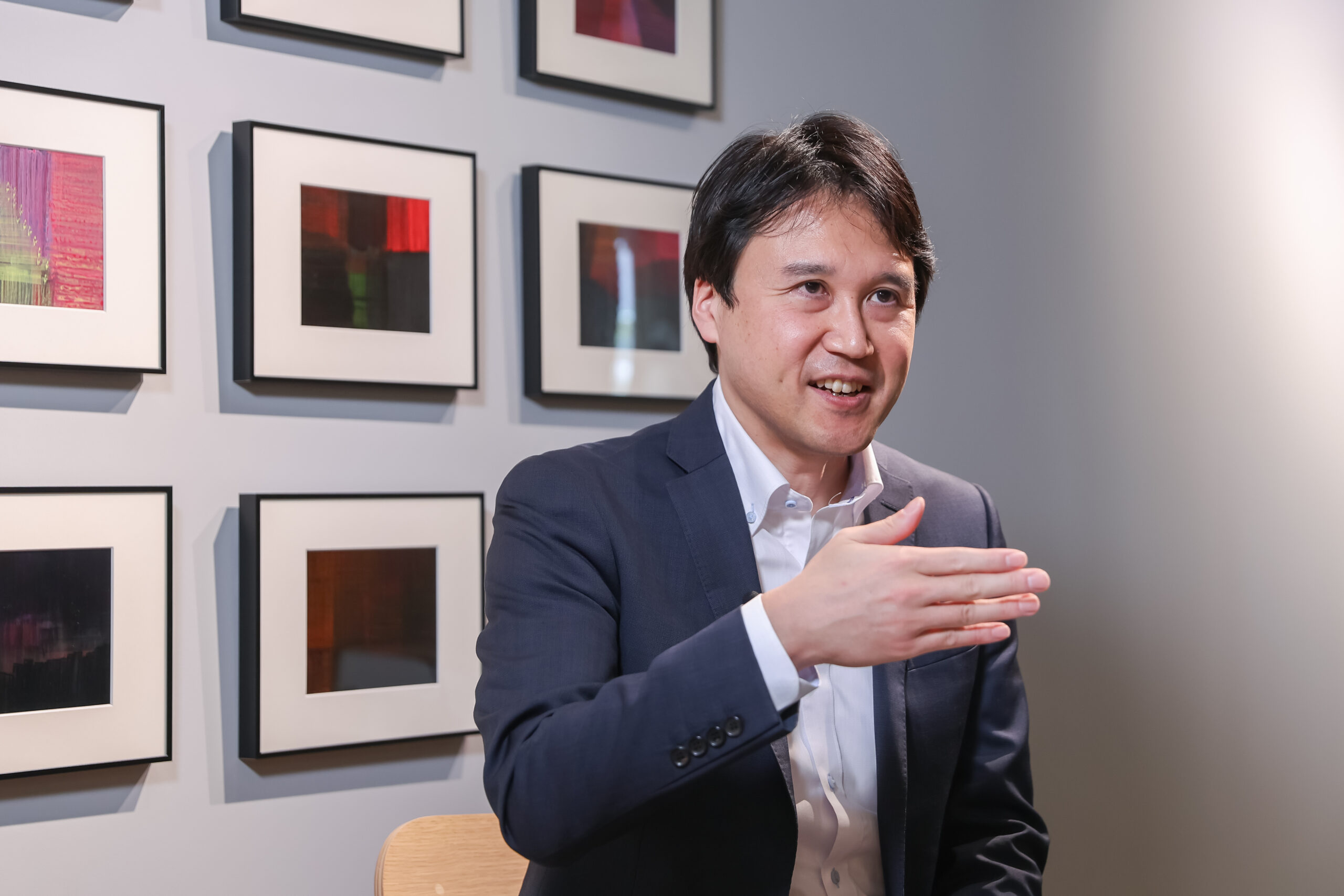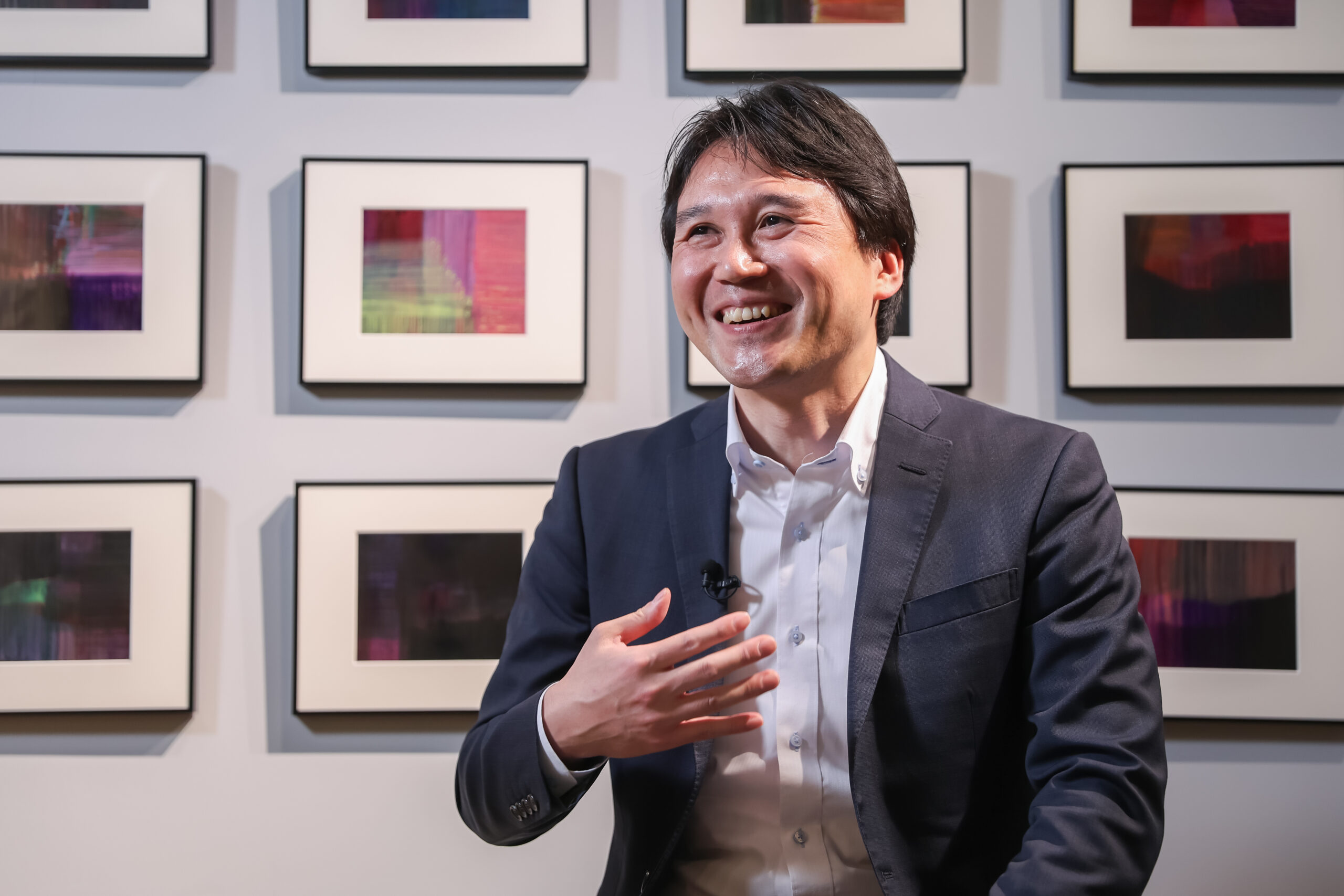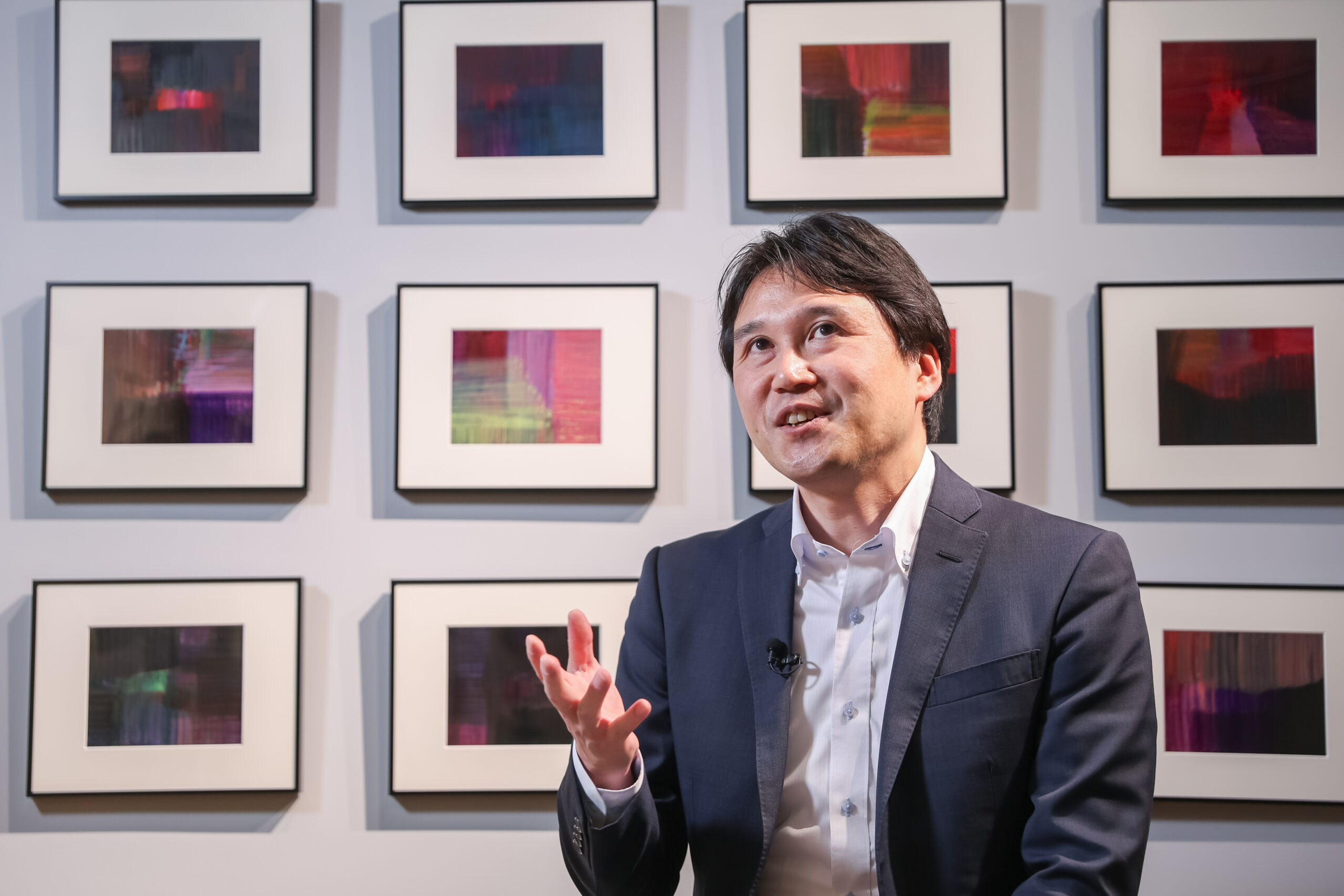
Communicating Intentions Using Brainwaves
In IoB, we are investigating invasive BMI technologies, which involves implanting electrodes into the brain, to enable high-precision reading of thoughts, extracting information, and directly inputting information into the brain. Patients with amyotrophic lateral sclerosis (ALS) cannot speak or communicate due to paralysis. This technology aims to enable such patients to communicate their intentions using brainwaves.
Even with ALS, their consciousness remains intact. However, due to complete paralysis, they may experience locked-in syndrome, a state of being trapped within their own bodies. With the ability to communicate, even those with locked-in syndrome can continue participating in various aspects of social life. Therefore, we are researching how technology can overcome this situation.
Aspiring to Apply Physics Knowledge to Medicine
I originally majored in physics and, during my youth, held the belief that studying physics could unlock the understanding of anything. This led me to join a research lab specializing in brain simulations, where I conducted research on simulating brain activity and human behavior using mathematical models.
Driven by the desire to apply these techniques to medicine, I decided to pursue a medical degree and became a doctor. Even after becoming a physician, I remained deeply interested in research utilizing mathematical models and their medical applications. At that time, I participated in a project at Osaka University’s Department of Neurosurgery aimed at developing an EEG-based BMI. This led to my engagement in the development of invasive BMIs and various other research endeavors, which ultimately shaped my current path.

Deciphering Imagined Content from Brainwaves
We are developing technologies that can measure brainwaves from electrodes implanted in the head and display the imagined content as images on a screen, as well as technologies that can output imagined thoughts as text or video. For example, patients with ALS are unable to speak due to motor impairments but can still communicate by imagining mouth movements, leading to their motor cortex emitting clear signals indicating their intention to move their mouth. These signals can be measured and interpreted by AI, allowing the system to output the corresponding text on behalf of the patient.
Furthermore, if we can decode brainwaves from higher-order regions beyond the motor cortex, this technology could become applicable to individuals with motor cortex impairments.
Notably, when we perceive an “object,” the signals from our eyes are processed in the brain, leading to the recognition of the object’s identity. Simultaneously, the brain also generates predictive signals anticipating “what will be seen.” In other words, the brain doesn’t simply react to stimuli; it actively predicts what stimuli are likely to arrive. Object recognition emerges from the integration of visual stimuli with these predictive signals. Therefore, there are commonalities between the brain activity associated with imagining something and the activity associated with seeing something.
By exposing individuals to various “objects” and training AI on the corresponding brain signals, we can enable the system to predict “what kind of signals would emerge when imagining a particular object,” thus allowing it to infer the imagined content. We are particularly focused on identifying the specific brain activity information that yields accurate inferences. Our research has shown that utilizing higher-order information, such as semantic content, leads to significantly improved inference performance. For example, the accuracy and probability of a subject successfully displaying a human face on the screen in response to the instruction “Imagine a human face” have been substantially enhanced.

Providing Options while Addressing Anxiety
Our survey conducted at the ALS Association revealed that over half of the participants expressed a desire to use invasive BMIs, with a particularly strong emphasis on the need for communication support. Many individuals retain some degree of motor function, allowing them to engage in various activities, such as writing books or organizing music events using eye movements or mouth movements. However, these activities become severely restricted when complete muscle paralysis occurs. This is where providing options for brain-signal-based communication becomes crucial.
During a previous symposium, when I asked the audience to raise their hands if they had concerns about this technology, approximately one-third of the attendees did so. I believe this reflects the deep-seated anxiety associated with having machines read and potentially control one’s thoughts. However, the perception of options is likely to differ between healthy individuals and those facing a debilitating illness. As healthcare professionals, it is our responsibility to provide these options. The ultimate decision of whether or not to utilize these options lies with the patients and society as a whole. Therefore, I believe it is our duty to inform the public about the existence of such options.
Striving to Alleviate Patient Symptoms through Engineering and Mathematical Approaches
In line with the grand vision of Moonshot, which aims to liberate individuals from physical constraints, we are pursuing the realization of this goal through the decoding and control of brain signals. Our objective is to develop technologies that empower individuals with limited or no mobility to participate fully in society and pursue their aspirations, just like able-bodied individuals.
As a neurosurgeon, I often encounter a sense of helplessness and limitations due to the fact that many brain diseases are currently incurable. Therefore, my ultimate goal is to contribute to the amelioration or even cure of these diseases through engineering and mathematical approaches. The prospect of successful treatment would bring me immense joy.

Pioneering Your Own Unique Research Field!
While there exists a vast array of established research fields, I find it particularly exciting when individuals venture beyond these boundaries to forge their own unique research domains that span multiple disciplines. Instead of confining yourselves to existing frameworks, I encourage you to explore possibilities guided by your own interests and passions, leading to the creation of groundbreaking new research territories.
Interview, Writing, and Video Editing by Space-Time Inc.
